Stay On It
by Julius Eastman
[Online Resource]

view/request
Composer Julius Eastman’s (1940 – 1990) music explores his identities as a gay man and Black American. Stay On It was composed in 1973 and combines minimalism with pop music. This new performance, which features musicains and dancers collaborating remotely, is dedicated to essential workers of color in the United States.
I found out about this performance through one of the many organizations involved in its production: The Dream Unfinished. The Dream Unfinished is an activist orchestra based out of New York which uses classical music as a platform to engage audiences in dialogues surrounding social and racial justice.
Reviewed by Ben
Tagged: Classical music, Music, Pop music, Racism
Into the Lime
by The New Mendicants
[Music CD]
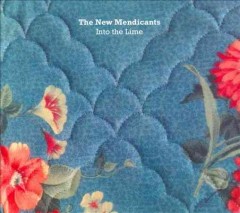
view/request
The New Mendicants are Joe Pernice, Norman Blake and Mike Belitksy. Pernice and Belitsky, Pernice Brothers alumn and current Toronto residents, met Blake (Teenage Fanclub) at a London gig back in 2000. About a decade later, Norman sent Joe a message: “Back in Canada at the end of next week. Want to be friends?”
Into the Lime‘s initial collaborative spark came care of submitting music for a film adaptation of Nick Hornby’s book A Long Way Down. Despite the novel’s dark subject matter, the album is a sweet sounding, almost like a modern day Everly Brothers record. Clever songwriting and close, two-part harmony are present throughout. Pernice takes many of the leads. He’s an American (once residing in Northampton, MA!) who tries to sound like a Brit. Blake’s pure, high harmonies are coming from a Scotsman maybe hoping one day to be a Byrd. The album is the perfect blending of voices and styles. The friendship and enthusiasm for this side project is clearly audible on the recording.
Reviewed by Jason
Tagged: Folk music, Pop music
Made In California
by The Beach Boys
[Music CD]

view/request
Wow.
New paragraph: this Beach Boys box is something to behold. Set up like a high school yearbook with large glossy photographs, interviews, articles and fake advertisements, Made In California is a thing of beauty. We flip to the last page and we see six cds filled to the max with hits, album cuts, rarities, outtakes and live versions. The set commemorates 50 years of Beach Boysdom from Brian’s “Surfin’” demo right up to their 2012 single “That’s Why God Made the Radio”.
Made In California has enough newly unearthed material for completests, music scholars and other varying degrees of nerd. It is also consistent in high standards so it doesn’t feel too overwhelming for someone who is just discovering that this group isn’t a band that only sings about surfing and cars. You need not have to comb through sub-par tracks.
Obviously, the genius Brian Wilson is at the forefront of the productions here. We truly realize how special the body of work he had produced and see the heights of creative genius and musical innovation. Wilson can safely be put alongside Gershwin, Copland and Ellington in the Hall of Great American Composers (this building does not exist). His baby brothers shine as well; Dennis, the drummer/rebellious middle child, is represented with a multitude of brilliant heart-aching ballads (mostly unreleased until now) and Carl, the finest singer of the lot, is clearly the soul of the Beach Boys. The latter comment becomes evident as you make your way through the recordings… trust me on this.
If you’re familiar with their catalog, look out these newly issued gems “Sail Plane Song”, “Sound of Free”, “California Feelin’”, “You’re Still A Mystery” and “Where Is She?”. For those unfamiliar to the Beach Boys, how I envy you to be able to experience hearing this wonderful music for the first time.
Reviewed by Jason
Tagged: 1960s rock music, 1970s, Pop music, Rock music
Simon & Garkfunkel: The Columbia Studio Recordings 1964-1970
by Simon & Garfunkel
[Music CD]

view/request
Simon & Garfunkel never felt like a singles band to me. Sure, there’s the massive, mega-hits: “Mrs. Robinson”, “The Sound of Silence”, “The Boxer”, “Bridge Over Troubled Water”, “Cecelia”, etc., but Paul Simon’s songwriting abilities were never simply tunnel visioned to the radio dial. All five of Paul & Artie’s studio albums are classics that are meant to be heard front to back and then back to front again. With the Columbia Studio Recordings boxed set, we can hear every song, every angelic harmony, every sweet acoustic guitar move and every perfect arrangement.
Six or seven years is not a whole lot time in the grand scheme of things, but Simon & Garfunkel made it count with their prolific run as Columbia Records recording artists.
Reviewed by Jason
Tagged: 1960s rock music, Folk music, Pop music
The Third Eye Centre
by Belle & Sebastian
[Music CD]
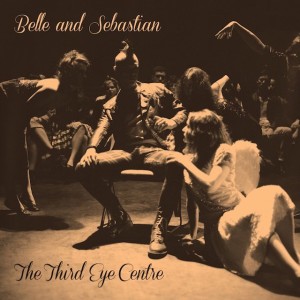
view/request
The Scottish pop group Belle & Sebastian are rather prolific. Along with releasing several albums over the course of their nearly two decade career, the band has also put out several ep’s (i.e. short albums) and non-album track singles. The compilation The Third Eye Centre gathers up interesting ep tracks and b-sides spanning 2003 to 2010.
In this collection, we see the wide range of influence and also the musical versatility Belle & Sebastian possesses. They bounce from perfect pop song to ballad to Bossa Nova to disco to country & western and then back to perfect pop song again.
Singer/songwriters Stuart Murdoch, Stevie Jackson and Sarah Martin provide backstory forall of the tracks in the beautiful attached booklet with this small boxed set. It’s baffling that songs such as “Last Trip”, “Long Black Scarf” or “Blues Eyes of a Millionaire” were cast aside and not included on the band’s albums from the 2000’s. The Third Eye Centre is a really fun, diverse collection that has also enough consistency to make it work as a proper album.
Reviewed by Jason
Tagged: Pop music, Rock music
Headquarters
by the Monkees
[Music CD]
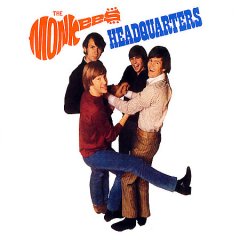
view/request
To earn the Monkees the right to play on their own records, Michael Nesmith’s fist had punch a wall accompanied with the threat “that could’ve been your face”. Thankfully the powers that be relented because Headquarters, the band’s third release, is possibly their most unified, spirited effort.
And now a bit about the personnel… Nesmith handles much of the guitar duties, the classically trained Peter Tork plays keyboards, guitars, basses and banjos, Mickey Dolenz sits behind the drum kit and dabbles on the guitar and Davy Jones shakes a mean tambourine and maraca. All four sing. Producer Chip Talyor plays the occasional bass.
Michael Nesmith, asserting himself as the band’s most prolific songwriter, contributes the twangiest of tunes including “Sunny Girlfriend” and “You Just May Be the One”. Peter Tork writes “For Pete’s Sake”, the groovy number that became the track which rolled over the end credits of the band’s television program. Davy tackles the Hildebrand/Keller number “Early Morning Blues and Green” replete with Wurlitzer electric piano and a wild, distorted organ. Mickey Dolenz sings and writes the psychedelic “Randy Scouse Git” (included on most Monkees “best of” compilations), a song that was inspired by the band’s trip to London and hanging out with the original Fab Four.
Headquarters sounds like a band working together trying to find their sound. It’s garage, it’s pop, it’s joyful.
Reviewed by Jason
Tagged: 1960s rock music, Pop music
How Music Works
by David Byrne
[Book]
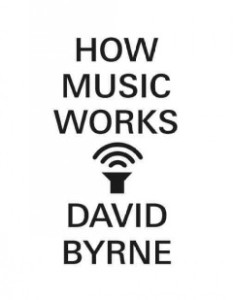
view/request
“I think I managed to give a sense that the world of music is wider than my personal experience, but my experience figures in here too”, David Byrne writes about his recent book How Music Works, and this statement gives you a very good idea of what you will find in this very enjoyable book. How Music Works explores the world of music through the experience of one musician’s experiences and wide ranging thoughts. As a result, it is neither a comprehensive book on the nature of music nor a complete biography of its author, though it combines elements of both. Byrne explores the history of music and musical thought, the influence of technology and economics on music, the role of music in society, and the future of the music industry. Along the way we learn much of Byrne’s career, his own approach to music, art, and performance in general.
Byrne is an excellent writer, and a man with wide ranging and interesting ideas. Reading How Music Works is a pleasure, and left me with an increased urge not only to explore more of his music and to read more of his writing (Forbes Library also owns his Bicylce Diaries), but most of all, to make more music of my own. It is, above all, David Byrne’s unending enthusiasm for everyday creativity and for the participation of everyday people in the world of music that will make the greatest impression on you. A great book which will be enjoyed by music lovers of all types.
Reviewed by Ben
Tagged: Music, Non-fiction, Pop music
Fifty Sides of the Beach Boys
by Mark Dillon
[Book]
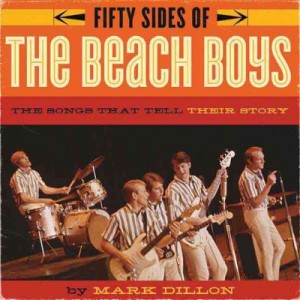
view/request
Mark Dillon’s book is an entertaining look at fifty Beach Boys tunes. The selections are listed chronologically and an admirer (most often a musician) shares a personal memory attached to each song. Some contributors were colleagues and spent time with the guys, others grew up listening to the records. The surviving Beach Boys are also among the fifty selected. In addition to the recollections, Dillon provides historical recording notes, songwriting origins and wonderful Beach Boys factoids.
Memorable bits for me come from the Byrd’s Roger McGuinn on “Don’t Worry Baby”, Beach Boys session player Carol Kaye “California Girls”, actress/musician Zooey Deschanel on “Wouldn’t It Be Nice”, director Cameron Crowe on “Feel Flows” and brief-Beach Boy Blondie Chaplin’s take on “Sail on Sailor”.
Reviewed by Jason
Tagged: 1960s rock music, Biography, Pop music
Nilsson Sings Newman
by Harry Nilsson
[Music CD]
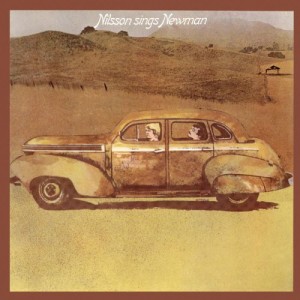
view/request
1970’s Nilsson Sings Newman is an example of the potential for beauty in popular music. Randy Newman, not then a household name, was approached by tenor extraordinaire Harry Nilsson about making an album. Nilsson was a fan of Newman’s effortless melodies, thoughtful chord structures and clever lyrical ability.
Nilsson Sings Newman features only the two artists in question. Newman composes the songs and handles the piano playing duties; Nilsson sings. The simplicity of this set up lends itself to display dynamics and emotive arrangements which do not seem to exist in most contemporary recordings.
Nilsson took great care in recording his vocals on the album. It is rumored that on some songs, pieces of 100 or so takes were spliced together (and remember this was using multitrack tape). He also layered his voice to produce heavenly, Beach Boys-esque harmonies in appropriate places. The refrain of the opener “Vine St.” or the sublime “Caroline” perfectly exemplify the richness of his harmony singing.
The album is full of story songs that in some places are nostalgic for the past. Lyrically, Nilsson Sings Newman feels like a truly American experience. Songs about cowboys, the Midwest and leaving home fill the record. As expected from Randy Newman, humor plays a large part as well. Nilsson, always a fan of silliness and inside jokes, contributes to the humor by insisting that certain off mic instructions by Newman be left on the final version.
Nilsson Sings Newman is an album that is graceful, funny and technologically impressive. It’s great on headphones and it’s one of those albums that I’ll never tire of listening.
Reviewed by Jason
Tagged: Pop music, Vocals
Collaborations
by Ravi Shankar & George Harrison
[Music CD]
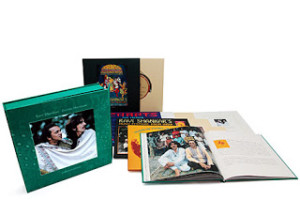
view/request
George Harrison was first wowed by the sitar, a traditional Indian stringed instrument, on the set of the Beatles film Help!. The young pop star was intrigued and transfixed by the music he heard. He later went out and bought his own sitar at a shop in London and found his way round the neck enough to dub a part onto “Norwegian Wood” on the Rubber Soul album. Harrison then wanted to go beyond his rudimentary plucking on the instrument and properly learn. Well, why not get lessons from the master Ravi Shankar?
The two studied together in Los Angeles, California and later in India. Though the Beatle did not pursue a career with the sitar after discovering the amount of years, intense training and discipline it takes to play classical Indian music, he and Shankar became life long friends. This boxed set Collaborations celebrates the two musicians’ friendship, spiritual connection and recorded musical partnerships. Harrison was involved as a producer (and sometimes a musician) on three of Shankar’s albums ranging from 1974-1997 and they all appear here along with a live concert dvd and a beautiful hardcover book.
Reviewed by Jason
Tagged: Indian music, Pop music
Wild Flag
by Wild Flag
[Music CD]
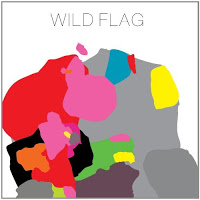
view/request
Dear Reader,
I would never lie to you. And when I say to you that I like to rock, I hope you understand that what I am saying is an absolute truth. Wild Flag’s self-titled debut album is what rock n’ roll ought to be: loud, fast, played live and without a lot of fuss. This supergroup features ex-members of Sleater-Kinney, The Minders and Helium. What stands out most to me musically is Carrie Brownstein’s (of Portlandia fame) blistering riffs, the spirited drums fills of Janet Weiss and the harmony sound the four vocalists create. The stellar musicianship of this bassless, garage rock quartet often propels these excellent songs into uncharted territory.
Just a couple examples for you… The lead off track “Romance” has some reverbed out surf overtones and a chorus that can’t help getting stuck in your head. On “Glass Tambourine”, the group certainly draws from the Nuggets archives, but then moves into a spaced out heavy jam that the late Jimi Hendrix would certainly appreciate.
I love this album and that’s a fact!
Sincerely,
-JSM
P.S. Please enjoy this music video directed by Tom Scharpling.
Reviewed by Jason
Tagged: Music, Pop music, Rock music
Blood on the Tracks
by Bob Dylan
[Music CD]

view/request
Once this guy I knew split up with his girlfriend and then he was gone for a while. I think he went to his uncle’s farm out in Kentucky or somewhere. When he came back, he had a beard and seemed a bit more serious. I asked him how he was feeling and he softly replied, “I’ve been listening to a lot of Blood on the Tracks, man.”
Blood on the Tracks? I had heard of that, but I was in the twilight of my teenage years: I was still thinking of and enjoying Dylan with the big curly hair, polka dot shirt, pointy shoes and Al Kooper playing groovy organ riffs. Still, I sought out this folky record.
Dylan at that time was going through the break up of a marriage and though the author denies any trace of autobiographic tendencies, the songs appear to reflect this time of his life. The album opens with “Tangled Up in Blue”, a lyrical bombast about two lives crossing. Other highlights include “Idiot Wind”, the eight minutes and change “Lily, Rosemary and the Jack of Hearts” and “Shelter From the Storm”.
Like the majority of his work, the lyrics read like poetry on Blood on the Tracks and here we find Dylan with his heart on his sleeve and at his most tender and delicate state. When I went through break-ups as a younger lad, I tended to go with early Beach Boy albums. They had those beautiful harmonies that are underlined with melancholy. It’s easy to wallow and hold onto sadness like a serpent to the neck with this sort of music. On Blood on the Tracks, Dylan is presenting a more mature and grown up outlet for heartbreak, man.
Reviewed by Jason
Tagged: Country music, Folk music, Pop music












